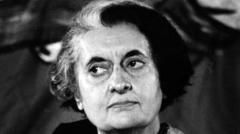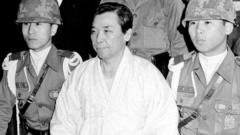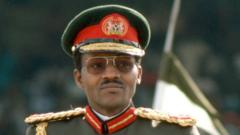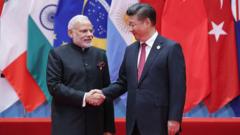This article explores Indira Gandhi's attempt to centralize power and introduce a presidential system in India during the mid-1970s, highlighting the consequences of such ambitions.
The Untold Chapter of India's Presidential Aspirations: Indira Gandhi's Bold Moves

The Untold Chapter of India's Presidential Aspirations: Indira Gandhi's Bold Moves
A deep dive into Indira Gandhi's attempt to shift India from a parliamentary system to a presidential one during the Emergency period.
During the mid-1970s, under the regime of Prime Minister Indira Gandhi, India found itself enveloped in an era defined by the imposition of the Emergency, a time when civil liberties were stripped away and many political adversaries were incarcerated. As historian Srinath Raghavan illuminates in his recent book, "Indira Gandhi and the Years That Transformed India," this backdrop of authoritarian rule provided fertile ground for the Congress party government to reimagine India's governance structure, aspiring towards a centralized presidential system. This conception, driven by a vision of limiting parliamentary checks, was inspired, in part, by the incarnation of a strong presidency in France under Charles de Gaulle.
The momentum for these drastic changes emerged in September 1975 when BK Nehru, a seasoned diplomat and confidant of Gandhi, penned a letter commending the Emergency as a remarkable testament to courage fueled by popular support. He argued that the existing parliamentary structure had failed to meet the nation's needs, advocating for a president directly elected to enact tough decisions, free from legislative dependence. Nehru's proposal envisioned a single seven-year presidential term, a judiciary restrained in power, and the dilution of fundamental rights, which he feared obstructed governance.
As Nehru brought these radical suggestions to Gandhi's attention, they were greeted with enthusiasm by her inner circle and prominent Congress figures. Senior party members, like Swaran Singh and Jagjivan Ram, expressed fervent support for the creation of a powerful presidency. Amidst this political dynamics, Gandhi remained cautiously non-committal but directed her aides to further investigate these proposals.
In a clandestine process, a document titled "A Fresh Look at Our Constitution: Some Suggestions" emerged, advocating for a president with immense powers, effectively cranking the levers of authority away from the Supreme Court and consolidating governance within the executive branch. This document hinted at an impending shift that could validate the aspirations for a parliamentary democracy encased in an authoritarian framework.
Although the idea of transitioning to a formal presidential system never fully materialized, its echoes were profoundly felt in the Forty-second Amendment Act of 1976. This amendment introduced measures that enhanced parliamentary power while shallowing the judiciary's ability to challenge legislative actions, a hallmark of the growing authoritarian tendencies under Gandhi. The amendment also bestowed upon the federal government extensive authority, reshaping political dynamics to further concentrate control.
As the Emergency waned and the Janata Party briefly ascended to power in 1977, efforts ensued to reverse the authoritarian slant, culminating in the Forty-third and Forty-fourth Amendments, designed to restore democratic governance and checks on power. However, Gandhi's return to leadership in January 1980 reignited discussions around a presidential system, sparking debates about her potential shift to that role herself.
Despite flirtations with presidential governance and shifts in political winds, ultimately India retained its parliamentary democracy. Raghavan posits that while Gandhi's maneuvers aimed at consolidating her power, they often lacked long-term foresight—a reflection of her tactical approach amidst a landscape fraught with the urge for reform.
The political urge for such a systemic change lingered through subsequent years, with voices advocating for a presidential system rising even as late as 1984. However, the assassination of Indira Gandhi quelled this discourse, marking a definitive chapter in India's governance narrative, firmly cementing its identity as a parliamentary democracy.




















